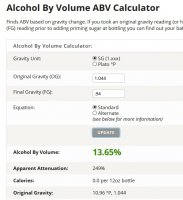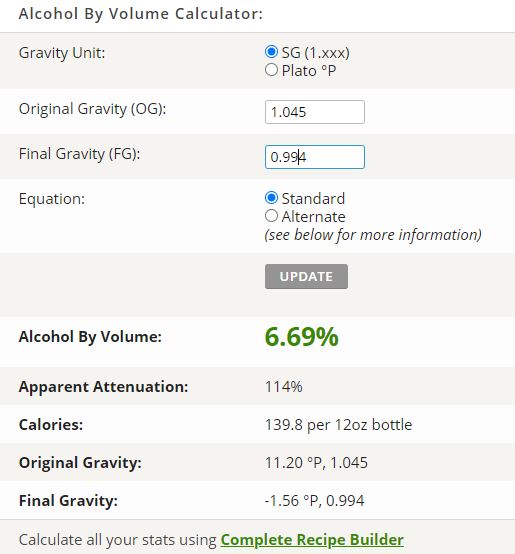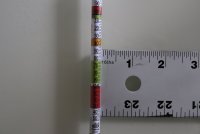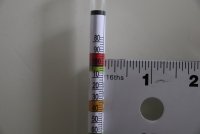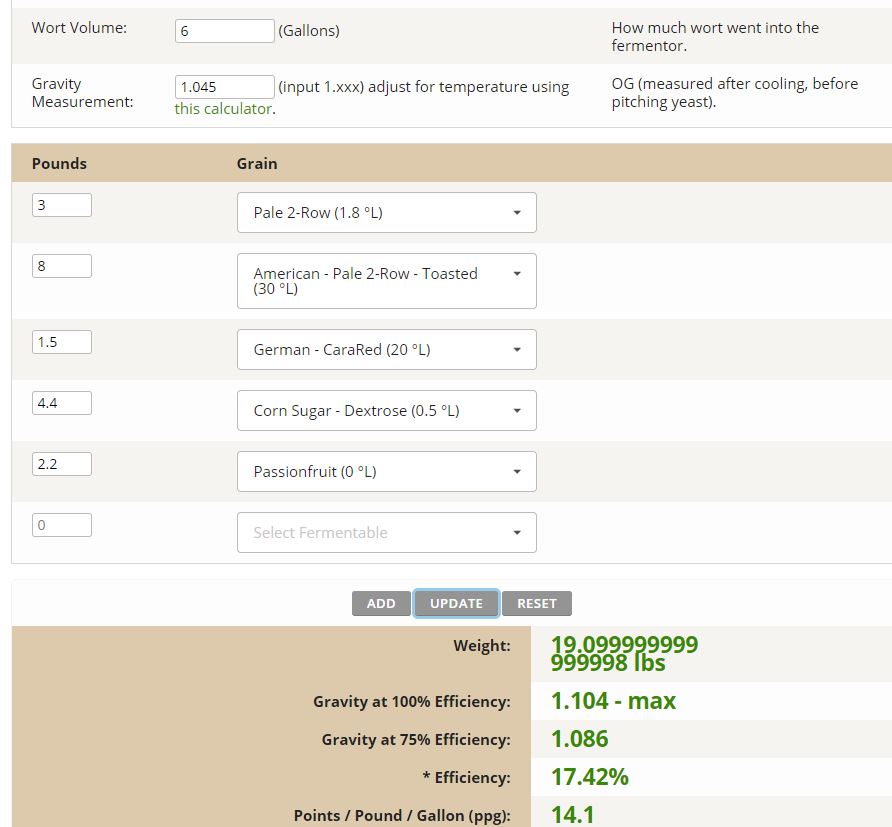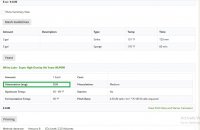Hi,
So wondering what people's thoughts are about this strange situation. So I brewed a juicy IPA with frozen fruit and White Labs WLP099 Super High Gravity Ale Yeast. When I finished the boil and brought the temp down to 26 celsius, the OG was 1.044. 5 days later, I checked the FG and it was .98 (8.4%ABV). The ambient temperature in my place was 26 celsius. Since this yeast can technically be as high as 20% ABV, I knew this reading could be higher. I added a space heater next to the fermenter, and 1 day later the FG went to .94. So now the ABV is 13.65%. I checked the temperature of the wort, and it is 35 celsius. The yeast is recommended to ferment at max 20.5 celsius. Why is it that in practice, my wort has to be considerably higher in temperature to ferment out completely?
I should say that I have gotten this ABV before in the winter, when I left my primary fermenter next to the radiator. Also, no off flavours like banana or raisin...turned out well. I'm happy with the result, but mystified as I thought most yeast would die at this temperature...they seem to be having an all-you-can-eat sugar buffet with no end in sight
For quick reference:
6 gallons
8lb US 2 row pale
3lb Maris Otter
1.5lb Carared
Mash temp 66 celsius (2 hours for max extraction)
11 cups dextrose
1kg frozen tropical fruit (pineapple, mango, dragon fruit, passion fruit)
Cheers!
So wondering what people's thoughts are about this strange situation. So I brewed a juicy IPA with frozen fruit and White Labs WLP099 Super High Gravity Ale Yeast. When I finished the boil and brought the temp down to 26 celsius, the OG was 1.044. 5 days later, I checked the FG and it was .98 (8.4%ABV). The ambient temperature in my place was 26 celsius. Since this yeast can technically be as high as 20% ABV, I knew this reading could be higher. I added a space heater next to the fermenter, and 1 day later the FG went to .94. So now the ABV is 13.65%. I checked the temperature of the wort, and it is 35 celsius. The yeast is recommended to ferment at max 20.5 celsius. Why is it that in practice, my wort has to be considerably higher in temperature to ferment out completely?
I should say that I have gotten this ABV before in the winter, when I left my primary fermenter next to the radiator. Also, no off flavours like banana or raisin...turned out well. I'm happy with the result, but mystified as I thought most yeast would die at this temperature...they seem to be having an all-you-can-eat sugar buffet with no end in sight
For quick reference:
6 gallons
8lb US 2 row pale
3lb Maris Otter
1.5lb Carared
Mash temp 66 celsius (2 hours for max extraction)
11 cups dextrose
1kg frozen tropical fruit (pineapple, mango, dragon fruit, passion fruit)
Cheers!


